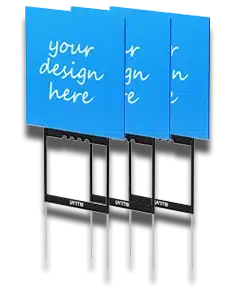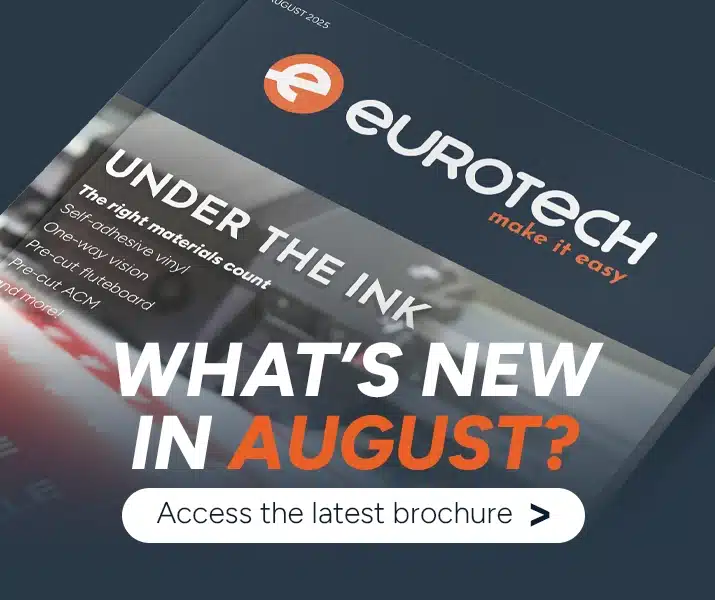
Enhancing Customer Experience – Best Practices for Signage Design Consultation
Customer experience is at the heart of a successful sign shop. A great signage design consultation can set the tone for the entire project, leaving clients confident and satisfied with your services. From understanding client needs to managing expectations, this article explores the best practices to elevate your consultations and deliver exceptional customer experiences.
1. Begin with Active Listening
The foundation of a successful consultation lies in listening to the client. While it’s tempting to jump into solutions, giving the client space to express their needs builds trust and ensures you fully understand their goals.
- Ask Open-Ended Questions: Start with questions like, “What message are you hoping to communicate with this sign?” or “Who is your target audience?”
- Clarify and Paraphrase: Restate their answers to confirm your understanding. For example, “So, you’re looking for a sign that will attract foot traffic to your store, correct?”
Active listening demonstrates that you value their input and sets the stage for a productive collaboration.
2. Understand the Client’s Business and Brand
A sign isn’t just a visual element—it’s a representation of the client’s brand. Take time to understand their business, target market, and branding guidelines.
- Research Beforehand: If the client has an existing website or social media presence, review it before the consultation. This will give you a sense of their branding style and messaging.
- Discuss Brand Values: Ask questions like, “What are three words you’d use to describe your brand?” This helps align the design with their identity.
- Audit Existing Signage: If they have existing signs, evaluate them. Are they consistent with their brand, or is there room for improvement?
Tailoring your recommendations to their business shows you’re invested in their success.
3. Set Clear Objectives
Define the purpose of the signage early in the consultation. Is it meant to increase foot traffic, promote a product, or improve wayfinding? Clear objectives guide the design process and help manage expectations.
- Common Signage Goals:
- Retail Signs: Draw attention and increase sales.
- Wayfinding Signs: Ensure easy navigation in large spaces.
- Promotional Signs: Highlight seasonal sales or events.
- Discuss ROI: If applicable, frame the discussion around how the signage will contribute to their business outcomes. For instance, “This digital signage could increase store visits by 20% based on similar projects we’ve done.”
Aligning on goals ensures both parties are on the same page from the outset.
4. Educate Clients About Materials and Options
Many clients aren’t familiar with the technical aspects of signage, so it’s important to educate them about their options. This helps them make informed decisions and avoids surprises later.
- Explain Material Choices: Discuss the pros and cons of vinyl, acrylic, aluminium, and other materials. For example:
- Vinyl is cost-effective and versatile.
- Acrylic offers a sleek, professional look but may cost more.
- Highlight Durability: Ensure clients understand how weather conditions or wear-and-tear will affect the lifespan of their signage.
- Present Visuals: Bring samples, photos, or even 3D mockups to help clients visualise the final product.
An informed client is more likely to trust your expertise and feel confident in their choices.
5. Collaborate on Design
While clients often come with ideas, your expertise as a signage professional adds immense value. Work collaboratively to refine their vision.
- Discuss Design Elements: Walk clients through considerations like colour psychology, typography, and layout.
- Colour: Choose hues that align with their brand and grab attention. For example, red evokes urgency, while blue conveys trust.
- Typography: Recommend legible fonts that suit their brand style.
- Layout: Suggest designs that prioritise key messages and balance visuals.
- Leverage Technology: Use design software or augmented reality (AR) tools to show how the sign will look in its intended location.
Collaboration ensures the design reflects both the client’s vision and your professional expertise.
6. Set Realistic Expectations
Managing client expectations is critical to a successful experience. Be transparent about timelines, costs, and potential challenges.
- Timeline Transparency: Clearly outline how long each phase—design, production, and installation—will take. If a project is urgent, discuss possible rush fees.
- Budget Clarity: Provide a detailed quote that includes all costs, such as materials, labour, and installation. Avoid surprises by discussing optional add-ons upfront.
- Highlight Limitations: Be honest about what’s achievable. For instance, if a design isn’t legible from a distance, explain why and suggest alternatives.
Clear communication builds trust and minimises misunderstandings.
7. Offer Personalised Solutions
No two clients are the same, so avoid cookie-cutter recommendations. Tailor your advice to their unique needs and goals.
- Customisation Options: Offer personalised suggestions, such as incorporating the client’s logo or using materials that match their industry standards.
- Case Studies: Share examples of similar projects you’ve done and explain how they benefited those clients.
- Propose Alternatives: If their budget is limited, suggest cost-effective solutions that still achieve their objectives.
Customisation adds value to your services and sets you apart from competitors.
8. Maintain a Professional Yet Friendly Approach
A consultation should be a collaborative, positive experience. Strive for professionalism while fostering a friendly, approachable vibe.
- Be Patient: Some clients may need extra time to understand technical details or weigh their options.
- Use Layman’s Terms: Avoid jargon and explain concepts in simple language.
- Stay Positive: Even if challenges arise, maintain a solution-oriented attitude.
Clients remember how you made them feel—being approachable and professional creates a lasting impression.
9. Follow Up After the Consultation
The client experience doesn’t end when the consultation does. Following up reinforces your commitment to their project and keeps communication open.
- Send a Summary: Email a consultation summary, including key decisions, next steps, and deadlines.
- Provide a Mockup: Share a digital or physical mockup of the proposed design to help them visualise the final product.
- Be Available: Let them know you can answer questions or make revisions as needed.
Proactive follow-ups ensure the client feels supported and confident moving forward.
10. Collect Feedback for Continuous Improvement
Every consultation is an opportunity to improve your services. After the project is complete, ask for feedback:
- Survey Clients: Use online tools like SurveyMonkey to gather insights about their experience.
- Request Testimonials: Happy clients may be willing to share testimonials or case studies for your portfolio.
- Analyse Trends: Identify recurring pain points or requests and adapt your approach accordingly.
Continuous improvement keeps your consultation process ahead of the curve.
What can we conclude?
An exceptional signage design consultation goes beyond taking orders—it’s about understanding client needs, collaborating on solutions, and delivering value at every step. By listening actively, educating clients, and managing expectations, you can build lasting relationships and set your sign shop apart in the Australian market.
When you prioritise customer experience, you don’t just create signage—you create trust, satisfaction, and long-term loyalty.




